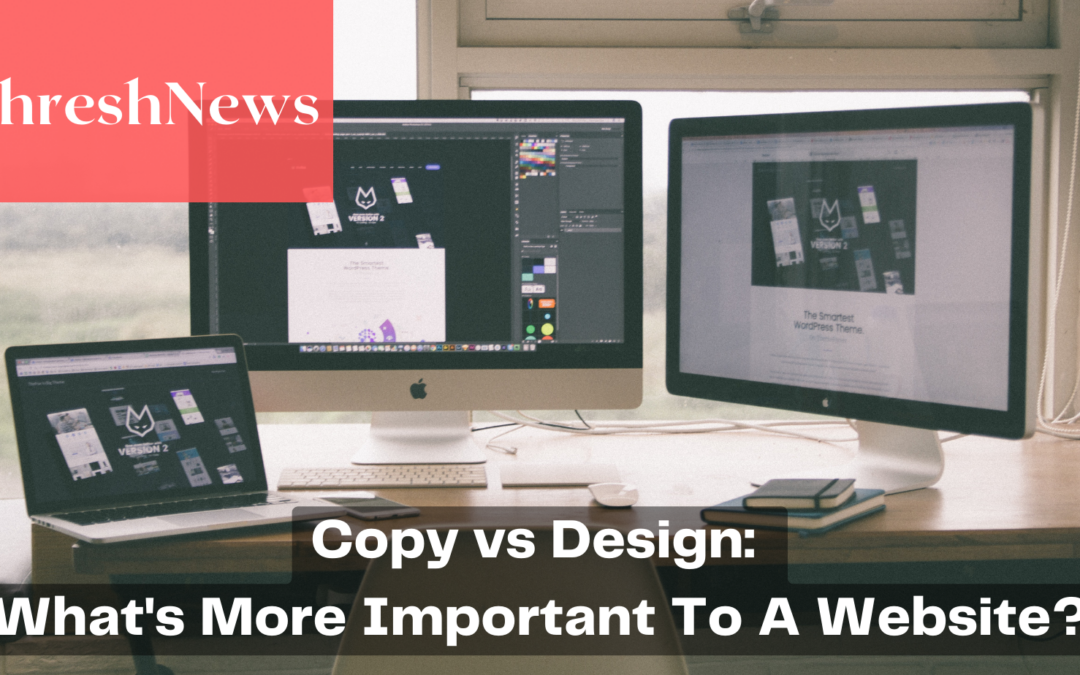
by threshold | Nov 24, 2023 | Digital Marketing, General, Marketing
 Ava Page
Ava Page
Welcome to the ultimate Pay-Per-Click (PPC) guide to help you excel in your next marketing campaign (hopefully with us)! At Threshold Agency, we know that mastering PPC advertising
is like discovering a treasure trove for your marketing strategy.
Ready to dive into this guide? We’ll uncover the secrets and strategies that’ll turn your PPC game into a winning streak.
understanding the basics of ppc.
PPC is like planting seeds that instantly sprout into visibility and clicks. This advertising method charges you for every click your ad receives, making it a swift way to capture attention.
But the real magic lies in how you wield this power strategically.
keyword research and selection.
In the quest for the perfect keywords, think of yourself as a detective on a thrilling case. Use tools like Google Keyword Planner or SEMrush to uncover those hidden gems —
keywords with high searches and low competition. The longer the keyword, the more precise your aim.
crafting compelling ad copy.
Think of your ad copy as your knight in shining armor—bold, captivating, and irresistible! Weave in those chosen keywords naturally, flaunt your unique selling points,
and don’t forget the battle cry—a compelling call-to-action (CTA). Test different versions to see which holds the strongest impact.
optimizing landing pages.
So, you’ve lured them in with your ad—now what? Your landing page should be the treasure map that guides them to their bounty. Keep it relevant, user-friendly,
and armed with persuasive content that converts visitors into allies.
bid management and budget allocation.
Managing your bids
is like a strategic duel—constantly maneuvering to claim the winning spot. Keep a watchful eye on performance data, adjust bids, and allocate your budget
wisely to champion those high-performing keywords and audiences.
utilizing ad extensions.
Ad extensions are like adding secret compartments to your ad, offering more treasures to your audience. Site links, callouts, location extensions, and structured snippets —
these are the secret weapons that make your ad shine brighter.
tracking and analytics.
The tools you definitely need to make sure you have in your kit? Analytics, like Google Analytics and Google Ads. Dive deep into data to unravel trends, understand your
audience’s journey, and make informed decisions to steer your campaign toward success.
remarketing and retargeting.
It’s time to bring back those adventurers who have had a glimpse of the goods but haven’t committed. Tailor your ads to their interests or actions, encouraging them to
return and claim their reward – your brand!
continuous testing and optimization.
Think of PPC as a grand experiment—constantly mix, test, and refine. Tiny tweaks could unleash a tidal wave of success over time.
overwhelmed? don’t be.
This may seem like a lot of information, and even more setup and maintenance. After all, you’re busy running your brand! But, there’s no need to fret.
This is kind of our thing. Let us get your marketing where it needs to be. After all, we’re the ones who can market your everything.
to sum things up.
With these strategies under your belt, you’re on the brink of PPC mastery! At Threshold, we specialize in crafting tailored PPC strategies that take your brand on an
exhilarating journey to success.
Ready to embark on this adventure together? Reach out to us today.
before you go.
For more tips and information about marketing your everything, take a look at the rest of our blogs, right here on our website!
You can also subscribe to our email newsletter (it’s got some great stuff), and follow us on Instagram, Facebook, or LinkedIn!
about the author.
Ava is the SEO & Paid Media Specialist at Threshold.
In her role, she is responsible for the content creation and management of all Threshold and PromoShak social channels and strategies, blog content, SEO maintenance,
and aids in digital marketing activation. She’s kind of a jack-of-all-trades.
When she’s not busy creating content, you can usually find her picking out new plants, island-hopping, watching Duke basketball, or spending time with her fur babies.

by threshold | Oct 24, 2023 | Creative, Digital Marketing, General, Marketing
 Ava Page
Ava Page
We’re about to dive headfirst into the exciting world of copywriting – the secret sauce behind high-performing websites, ads, and social media content.
If you’re looking to boost your online presence and turn casual visitors into loyal customers, you’ve come to the right place.
the power behind words.
In the digital age, where attention spans are shorter than ever, your words matter more than you might think. Every word on your website, in your advertisements, and on your social media profiles should work like a magnet, pulling your audience in and compelling them to take action.
That’s the magic of high-converting copy.
why high-performing copy matters.
engagement.
Great copy sparks interest and keeps your audience engaged. It’s the bridge that connects your audience to your message.
conversions.
The ultimate goal of any online presence is to convert visitors into customers. High-performing copywriting can make that happen.
brand voice.
Your copy is your brand’s voice – it should be unique, relatable, and memorable.
Now, let’s roll up our sleeves and discover how you can create copy that works wonders for your business.
know your audience.
Before you put pen to paper (or fingers to keyboard), you must understand your audience inside and out.
Who are they? What problems do they face? How can your product or service solve those problems?
Tailor your message to speak directly to your audience’s pain points and desires.
embrace the AIDA formula.
AIDA stands for Attention, Interest, Desire, and Action. It’s a classic formula that works wonders for copywriting, like so:
attention.
The first step in creating high-performing copy is to capture your audience’s attention right from the start. Your headline or opening sentence is your first impression, and it needs to be compelling. Here’s how to do it:
create intrigue.
Start with something that piques curiosity or poses a thought-provoking question. For instance, “Are You Making These Common Mistakes in Your Marketing?”
interest.
Keep their interest alive by discussing their problems or needs.
power words.
Incorporate words that evoke emotion or excitement. Words like “ultimate,” “exclusive,” or “revolutionary” can add impact to your headline.
desire.
Show them how your product or service can fulfill their desires.
pain points.
Identify a problem your audience faces, and highlight it in your headline. People are drawn to solutions to their problems.
action.
Finally, ask for the action you want them to take, whether it’s signing up, buying, or sharing.
sense of urgency.
Encourage immediate action by introducing urgency, such as limited-time offers or deadlines.
keep things clear and concise.
In the online world, less is often more. Clear, concise copy is easy to read and understand. Avoid jargon and complex language. Instead, use simple words and short sentences that get your point across quickly.
tell your story.
Humans are wired to connect with stories. Weave narratives into your copy to make your brand more relatable and memorable. Share customer success stories or anecdotes that showcase your product or service’s value.
test and optimize.
Copywriting is an art, but it’s also a science. Don’t be afraid to A/B test different versions of your copy to see what resonates best with your audience. Use tools like Google Analytics to track the performance of your copy and make data-driven improvements.
keywords & SEO.
For web copy, don’t forget the importance of keywords. Research relevant keywords and incorporate them naturally into your content. This will not only make your content more search-engine friendly but also help you reach the right audience.
always proofread.
Nothing screams unprofessionalism like typos and grammatical errors. Always proofread and edit your copy to ensure it’s polished and error-free.
And, if you’re able, it’s always a plus to get a second set of eyes on your work to pick up on things you may have missed, or even to give you a suggestion on how to make something just a little better.
to sum it up.
High-conversion, high-performing copywriting isn’t just a skill – it’s an art that requires a deep understanding of your audience, a mastery of language, and a sprinkle of creativity.
By following these tips, you can transform your online presence, boost your conversions, and create a lasting impact in the digital world. Remember, it’s not just about words; it’s about the magic those words create.
So, go ahead, write with professionalism, craft with playfulness, and watch your conversions soar.
before you go.
For more tips and information about marketing your everything, take a look at the rest of our blogs, right here on our website!
You can also subscribe to our email newsletter (it’s got some great stuff), and follow us on Instagram, Facebook, or LinkedIn!
about the author.
Ava is the Content Marketing Specialist at Threshold.
In her role, she is responsible for the content creation and management of all Threshold and PromoShak social channels, blog content, and SEO maintenance, and aids in digital marketing strategies both internal and client-facing.
When she’s not busy creating content, you can usually find her picking out new plants, island-hopping, watching Duke basketball, or spending time with her fur babies.

by threshold | Jul 10, 2023 | Digital Marketing, Marketing, Tech/Web, Thought Leadership
 Abby Barnes
Abby Barnes
AI: ever heard of it?
As the digital marketing landscape continues to rapidly evolve, artificial intelligence (AI) is emerging as a critical tool for marketers. At Threshold, we’ve witnessed how AI is reshaping customer interactions and enabling marketers to make more informed marketing decisions.
To fully unlock the potential of AI and create personalized customer experiences, it’s crucial to understand its fundamentals, select the right AI technologies, and measure its impact. We’ve created a guide to equip you with the knowledge you need to really harness AI’s capabilities, enhance your marketing campaigns, and drive your team toward success.
Let’s get started, shall we?
what is AI?
AI simply refers to the ability of machines to perform tasks that traditionally require a human. In digital marketing, AI plays a critical role in helping businesses automate and optimize their marketing efforts to create more personalized experiences for their customers. Cool, right?
One use of AI in digital marketing is through the use of machine learning algorithms. These algorithms can process and analyze large datasets, including customer behavior and preferences. AI can help identify patterns and predict future behavior, allowing marketers to develop more strategic and personalized marketing campaigns.
But it doesn’t stop there. Another application of AI is through the use of chatbots on your websites. Many property management companies have already started adopting these bots as they can serve as valuable virtual assistants, capable of delivering instant support.
what are the benefits of AI in Digital Marketing?
We’re so glad you asked.
enhanced efficiency
AI helps with automating tedious tasks like data collection, analysis, and segmentation, freeing up valuable time for marketers to focus on strategic initiatives.
personalized experiences
Leveraging AI tools allow marketers to gain insights into customer needs and preferences, providing tailored campaigns that resonate with your target audience.
real-time optimization
AI-powered analytics provide real-time insights into customer behavior, enabling marketers to optimize campaigns quickly. By leveraging AI’s ability to analyze vast datasets, businesses can make data-driven decisions that enhance marketing strategies and deliver better results.
automation and scalability
AI automates various marketing tasks, including customer service, data analysis, and social media and email scheduling. This automation allows businesses to scale their marketing efforts efficiently as their customer base expands.
identifying the right AI technologies
Choosing the right AI technologies that align with your specific needs is crucial for successful implementation in marketing. A wide range of AI-driven tools, from customer service bots to data analysis platforms, are available. Like any technology, AI in marketing carries inherent risks that should be addressed. Privacy concerns may arise when collecting and analyzing customer data using AI-driven tools.
That’s some serious business.
It is crucial to ensure that data is collected and used securely and in compliance with regulations. Additionally, being aware of the potential for bias in AI algorithms and taking steps to ensure accuracy and fairness are paramount.
integrating AI into your marketing strategy
Once the appropriate AI technologies have been identified, integrating them into your marketing strategy is key. As digital marketers, we’re already using AI-driven initiatives in Google Ads campaigns. Responsive Search and Display Ads are the perfect example!
By providing multiple headlines, descriptions, and creative assets, Google’s AI will generate ad combinations and learn over time which combinations drive better results.
AI-driven tools enhance efficiency and campaign effectiveness, but it is crucial to track and evaluate results. By measuring campaign performance, you can identify areas where AI has the most significant impact and make informed adjustments. Plus, (last point, promise), considering factors such as cost and return on investment helps ensure you make informed decisions about implementing AI technologies.
to sum it up
The potential of AI in marketing is vast, and understanding how to harness its power is vital for marketers. This comprehensive guide gives you a quick overview of the fundamentals of AI in marketing, along with how you can see success in implementation.
By embracing the benefits and mitigating the risks associated with AI, you can unlock your marketing team’s potential and drive better results.
Tired of spending precious hours trying to decipher AI, ad trends, and where to put your spending? We don’t blame you. Luckily, we have a solve. At Threshold, we are well-versed in AI technology and can guide you through this transformative journey.
Contact us today to explore the revolutionary possibilities AI offers for your marketing initiatives.
before you go
For more tips and information about marketing, take a look at the rest of our blogs, right here on our website! You can also subscribe to our email newsletter, or follow us on Instagram and Facebook!

by threshold | Jun 15, 2023 | Creative, Digital Marketing, Marketing, Thought Leadership
 Laura Robbins
Laura Robbins
Your brand story is the soul of everything you do. In a world of ever-increasing competition and constant bombardment of advertisements, your “why” as a company, brand, and business is just as important as the services you offer, the apartments you lease, and the products you sell. Connecting with your audience on a deeper level has become the key to successful marketing.
Your brand’s story holds the power to captivate, inspire, and foster a genuine connection with your target audience. Let’s explore several powerful ways to share your brand’s story and make an indelible impact on your customers, shall we?
craft a compelling brand narrative.
What’s your humble beginning? What are the core values, mission, and vision that drive your business? Crafting a story that highlights your brand’s journey, challenges overcome, and triumphs achieved will tap into the emotional response of your target audience. It conveys authenticity and can transform your brand from being a mere product or service provider to a source of inspiration and trust.
Stuck? Go back to the basics with a simple principle: why it all began.
showcase your people.
Humans are visual creatures. It’s human nature to feel more connected to a brand with a face. Leverage behind-the-scenes footage that resonates with your audience. Engaging visuals not only grab attention but also make your brand story more memorable and shareable.
leverage customer success stories.
Your customers are an invaluable asset when it comes to sharing your brand’s story. Encourage them to share their experiences, testimonials, and success stories. User-generated content adds an authentic touch to your marketing efforts, demonstrating real-world examples of how your brand has positively impacted people’s lives. Think about it, who wouldn’t be drawn to live in an apartment community that has so many real happy endings?
don’t forget: share your storytelling across all channels.
Your brand’s story should permeate all your marketing channels consistently. From your website and social media platforms to email campaigns and advertising, ensure that your narrative is integrated seamlessly. Develop a cohesive brand voice and tone that reflects your story, creating a unified experience for your audience across various touchpoints.
Why? Consistency helps reinforce your brand’s message and fosters brand recognition, making it easier for customers to connect with your story.
to sum it up.
Sharing your brand’s story is an integral part of effective marketing, allowing you to forge meaningful connections with your audience. Remember, your brand’s story is unique and deserves to be shared. At Threshold, we believe in storytelling’s power and are committed to helping businesses unlock their brand’s potential through compelling narratives. Watch as your marketing efforts become more impactful and resonate with your audience on a deeper level.
For more tips and information about marketing, take a look at the rest of our blogs, right here on our website! You can also subscribe to our email newsletter, or follow us on Instagram, Facebook, and Twitter!

by threshold | Mar 20, 2023 | General
 Ava Page
Ava Page
When designing (or redesigning) a custom website, there’s no denying that copywriting and design are going to be the two elements at the forefront of your mind during the creative process – but what really means more in the long run of your website’s success to gain traffic and enhance leads?
Lucky for you, we already broke it down.
What to expect from the design
It’s no secret that the main focus of website design is to accurately represent your brand’s message and image. You want to target your clients’ current and potential goals and desires – but how do you truly execute those ideas? Here are a few of our methods:
- Find the middle ground between your aesthetic, and the overall purpose of your brand
- Embrace minimalism – trying to incorporate too much in a single space will turn users away
- Create a design that speaks for itself, so your copy can focus on the product
- Tease brand design ideas by using shapes, lines, and colors that represent your overall tone
What to expect from copywriting
Although it may seem like a no-brainer, website copywriting is something that only some can do with the proper knowledge of on-site copywriting. While it’s true you want to focus your copywriting on the product(s) you’re looking to promote or sell, there’s more to it than just, “Here’s our product and what it can do.”
Here are a few of our methods:
- Keep the main focus on your products and services
- That’s what brought them there in the first place, right?
- Stick to one objective
- Bouncing around from topic to topic across your page is going to come off as scattered and unorganized
- Begin with benefits, close with features
- Research to get the best understanding of your topic
- It’s easier to break down the basics for clients and consumers when you have a full understanding
- Don’t abandon emotion for logic
- Combine both ideas into one compelling copy set
What brings the most conversions?
Data has shown that while a well-designed website is appealing to consumers, copywriting is what is really going to bring your work home and result in higher conversion rates. So, while you should never skimp on your website design, your copy should be the driving force.
Why you may ask? Website copywriting is where you’re going to be able to heighten your SEO capabilities. Don’t worry – we’ve got another blog that breaks it all down for you.
What comes first?
It’s not an uncommon practice to design a website first, and use that design to fill and create your copy. At the same time, it’s not at all uncommon to see the inverse of this process as well, which begs the question – is one more effective than the other? Let’s take a look at some of the pros and cons of each process.
Copy-First
When you choose the copy-first approach, you’re able to ultimately shape your website around your brand’s message, tone, and highlights, rather than having to write those copy points around a certain design space. Knowing what copy needs to be allocated during the design process will create a much more cohesive feel to your website. While there are many upsides to this process, there are some who see this as a downside in the overall creative process as it can add in some extra time that you may or may not have to allocate.
This isn’t to say that you can’t still create a high-conversion, visually appealing website by not following this process, whether it be for saving time or simply because it’s not the way your project management works.
Design-First
Looking in the opposite direction toward choosing a design-first approach, this process is often picked over its competitor due to its time-saving abilities. Rather than crafting around previously written copy lines, this process gives your design team full creative authority to design a stunning website that embodies exactly what your brand is about.
A downside of this process is that it can prevent you and your creative team from being able to design your website around what you’re wanting to express most in your copywriting, and would instead have to add in your copy later.
An easy way around this process would be to have your copywriter and design team work together in the creation of your site to ensure the proper areas would be included in the most efficient way for both departments.
So… is copywriting or design more important?
In terms of measuring conversions, copywriting will always be king over design when SEO strategies are correctly implemented. Luckily, we’re kind of experts in the matter.
However, this isn’t to say that you shouldn’t put the same amount of time and effort into your designs, as an attractive website will always be seen as a plus to clients, and can add a level of enjoyment when scrolling through all your (equally amazing) copy lines.
Before you go
Don’t forget, we’re experts when it comes to crafting marketing strategies that drive leasing results and building high-ranking SEO-friendly custom websites! Need help? Reach out to a CSM or any of our team members to get started on taking your marketing and SEO to the next level, see an increase in traffic, and watch the leads roll in.
For more tips and information about digital and real estate marketing, take a look at the rest of our blogs, right here on our website! You can also subscribe to our email newsletter, or follow us on Instagram, Facebook, and Twitter!

 Ava Page
Ava Page

 Ava Page
Ava Page
 Abby Barnes
Abby Barnes
 Laura Robbins
Laura Robbins
 Ava Page
Ava Page